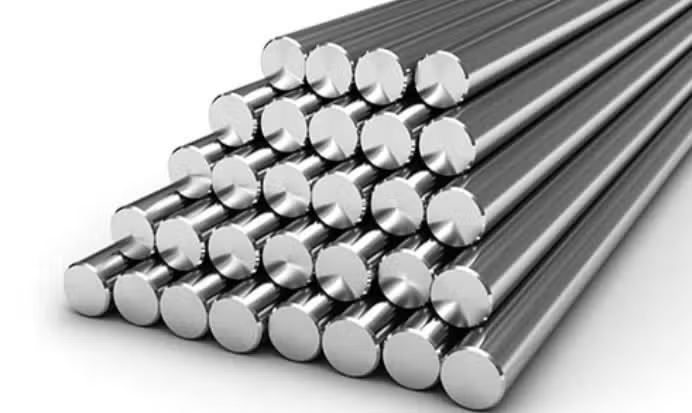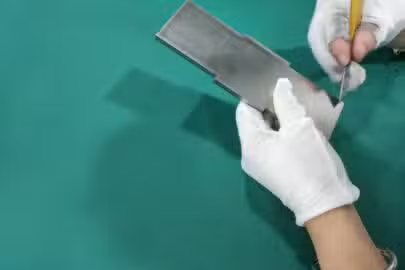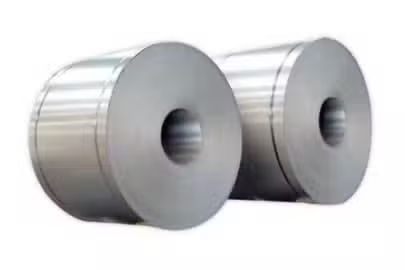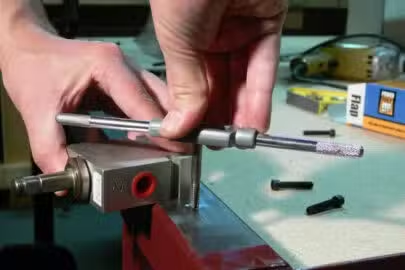316 stainless steel is popular because of its tensile strength and impeccable corrosion resistance. Notwithstanding, part manufacturers still subject the metal to surface finishing to improve its properties or aesthetics.

Every surface treatment option compatible with the metal modifies it differently. Hence, part manufacturers should know about the options available for the alloy and their effects. This article will introduce 316 stainless steel alloy and compatible surface finishing options.
Introduction to 316 Stainless Steel

For you to understand the surface treatment options and standards for 316 stainless steel alloy, you must know the metal properties and applications. This is important because it will point to how each surface finishing option interacts with the metal.
What is 316 Stainless Steel?

316 stainless steel alloy or alloy SS 316 belongs to the austenitic family. It contains iron (Fe) as its primary metal and chromium (Cr) 16-18%, nickel (Ni) 10-14%, and molybdenum (Mo) 2-3% which help shape its properties.
Chromium and Nickel make it corrosion-resistant. Hence, SS 316 is a good option for making parts used in harsh environments. Molybdenum makes it resistant to pitting. Trace amounts of carbon (C), manganese (Mn), silicon (Si), phosphorus (P), sulfur (S), and nitrogen (N) are also present.
316 stainless steel alloy is popular because it is strong, durable, versatile, and corrosion-resistant. For example, the automotive and marine industries make use of it since these parts are exposed to harsh conditions.
Properties
Properties of the SS316 alloy can be mechanical, thermal, fabrication, and fabrication.
- Tensile Strength
This is the maximum stress a material can withstand after stretching before it breaks. SS 316 alloy has a high tensile strength ranging from 515 to 690 MPa.
- Yield Strength
Yield strength is the stress at which a material undergoes permanent deformation without an increase in strain. SS 316 has a yield strength of 205 to 275 MPa
- Hardness
The hardness of a material is its resistance to indentation or scratching. Using the Brinell Hardness scale, SS 316 alloy has a range of 170 to 220 HB.
- Corrosion Resistance
Stainless steel 316 alloy has a high corrosion resistance as it forms a thin protective oxide layer on exposure to corrosive agents. Furthermore, they can resist localized corrosion or pitting.
- Thermal Properties
The alloy can function without losing its properties or other forms of degradation at a temperature between -200°C to 900°C. Furthermore, it can conduct heat efficiently with a range of 14 to 16.2 W/m·K (8 to 9.4 Btu·in/ft²·hr·°F).
- Density and Electrical COnductivity
Stainless steel alloy has a density of 7.9 to 8.0 g/cm³. Furthermore, it has an electric conductivity of 1.25 to 1.28 MS/m (7.2 to 7.4 %IACS)
- Fabrication Properties:
Stainless steel has moderate machinability, excellent weldability, and good formability.
Applications
Stainless steel 316 alloy’s properties especially its corrosion resistance make it a common material in several industries:
- Marine Industries
The alloy is applicable in making components exposed to saltwater due to its excellent corrosion resistance. These include dock pilings and pier supports.
- Chemical and Petrochemical Processing
The alloy is applicable in making storage tanks and piping systems for storage and transportation of chemicals like acids, gas, solvents, etc.
- Pharmaceutical and Medical Equipment
It is also applicable in making medical devices like sterilizers and autoclaves because it prevents microbial adhesion and growth and encourages sterilization.
- Food and Beverage Industry
Due to its corrosion resistance and hygiene, the alloy is applicable in making several components like tanks and mixers used in the food industry.
- Architectural and Decorative Applications
The alloy’s aesthetic appeal alongside its functional properties make it suitable for making handrails, balustrades, and other decorative components used in the architectural and decorative industry.
The Importance of Surface Finishes
Subjecting stainless steel alloy 316 will improve the following:
Aesthetics and Corrosion Resistance
Surface treatment options improve a part’s aesthetic value. As a result, part manufacturers should ensure they choose a finish that can enhance the part’s visual appeal.
Hygiene and Cleanability
Surface finishing options such as polishing and electropolishing will improve hygiene and cleanability. As a result, industries such as food and medicine use these finishing options. The surface finishing option smoothens the part’s surface and makes it non-porous. As a result, this will reduce microbial adhesion and improve cleaning and sterilization processes.
Functional Performance
Surface treatment options can improve the material’s properties like electrical conductivity and corrosion resistance. For example, passivation and electropolishing can increase SS 316 alloy’s corrosion resistance by forming a protective oxide layer which allows the material to last longer in harsh environments.
Industry Standards for Surface Finishes
Adhering to an international or regional standard can affect the part’s global use. As a result, you need to understand the industry for surface finishing. Below is an overview of the industrial standards for surface finishing.
- ASTM Standards
Here is an overview of the ASTM (American Society for Testing and Materials) standard for surface finishing.
ASTM B117: Provides the method for assessing a metal’s or a metal’s surface coating’s corrosion resistance under accelerated conditions.
ASTM E1444: Provides magnetic particle testing method to detect surface or near surface discontinuities when working with ferromagnetic materials.
ASTM D4417: Provides methods to measure a surface profile of a metal and ensure proper adhesion of coatings and achieve the desired surface roughness requirements.
- ISO Standards
Here is an overview of the ISO (International Organization for Standardization) standard for surface finishing.
ISO 8501: Specifies the preparation of steel alloys before applying paint or other product to ensure proper adhesion and better performance. This includes visual assessment of surface cleanliness and roughness.
ISO 8502: Provides tests to assess the contamination of the steel alloy’s surface before painting. Methods can measure contamination by soluble salt, chloride etc
ISO 8503: Covers method for measuring surface roughness parameters like peak-to-valley height, mean peak density, and mean peak spacing.
- ASME Standards
Here is an overview of the ASME (American Society of Mechanical Engineers) standard for surface finishing.
ASME B46.1: Covers the evaluation and measurement of a metals surface texture to specify the surface finish requirements in different applications.
ASME B16.5: Covers the surface finish requirements such as surface roughness, flatness, etc., for piping systems like pipe flanges, flanged fittings, and sealing surfaces.
ASME BPE: Covers the surface roughness, cleanliness, etc., of metal parts used in pharmaceutical, biotechnology, and food industries for safer production processes.
Surface Finishing Options for 316 Stainless Steel
Below are common surface finishing options suitable for 316 stainless steel alloy and how they improve its functional and aesthetic value
Mechanical Finishes

- Mill Finish
The mill finish is the surface condition of the SS 316 alloy after milling, grinding, or other mechanical processes. A milled part has visible machining marks like parallel lines or striations. Aside from that, they do not have any aesthetic value. Hence, it is the best option when aesthetics is not important. Furthermore, it retains the material’s natural corrosion resistance
- Brushed Finish
Brushed or satin finish involves brushing or sanding a part’s surface using an abrasive material. The process removes surface imperfections and creates a uniform grain pattern. Furthermore, the part’s surface becomes resistant to fingerprints and scratches.
- Polished Finish
Polish finish uses finer abrasives on the alloy surface to make it smooth and reflective. The mirror-like finish increases the part’s aesthetic value. Furthermore, it improves the material’s corrosion resistance.
Chemical Finishes
- Passivation
This is a chemical process that involves immersing the alloy in an acidic solution such as citric acid or nitric acid. It dissolves exogenous irons, other iron compounds, and other contaminants to improve the part’s corrosion resistance.
- Electropolishing
This is an electrochemical process that involves immersing the alloy in an electrolyte solution and then the electric current is passed through the solution. This removes surface imperfections and embedded contaminants, creating a smoother and brighter surface finish. Furthermore, there is an improvement in the material’s corrosion resistance and biocompatibility
Other Finishes
- Bead blasting
It is a cold treatment process where fine glass beads moving at high speed are directed onto the alloy surface. The generated impact then alters the alloy surface’s roughness and uniformity to the desired specification. Bead blasting creates a uniform and non-reflective matte texture while removing surface contaminants.
- Etching
Etching involves applying acid or other chemicals on the alloy surface removing contaminants and creating intricate patterns for decorative or identification purposes.
Factors to Consider When Choosing a Surface Finish

To choose the best surface finish for a part made using SS 316 alloy, you need to consider the following factors:
- Application and Environment
The application and the environment of use of the alloy play a huge role in the choice of surface treatments. For example, in the marine industry known for exposure to corrosive elements and a harsh environment, the right option should improve or maintain the part’s corrosion resistance. Hence, the popularity of options such as electropolishing and passivation.
Another example is the food industry, where surface options such as mechanical polishing which prevents microbial adhesion are popular.
- Desired Appearance
The aesthetic value of the part is the measure of its smoothness, color, texture, shape, etc., and it plays a huge role in the choice of surface treatment option. The right option should align with the manufacturer’s vision and aesthetic requirements and be consistent throughout the component.
- Cost and Efficiency
The cost of treating the SS 316 alloy can put a limit on the type and quality of treatment option you apply. The cost of finishing the material includes labor, material, and maintenance. Furthermore, an increase in processing time can also incur a higher cost. The right finish should be cost-effective, functional and performance.
Zintilon Surface Finishing Option for Stainless Steel 316
There are many surface finishing options suitable for stainless steel alloy each with specific requirements and cost. The best way to ensure quality is to outsource to a reputable surface finishing service provider.
At Zintilon, we offer several surface finishing options for stainless steel alloys and guarantee high-quality parts. Contact us today and experience a faster lead time and competitive market pricing.
Conclusion
Part manufacturers subject stainless steel to surface finishing options like polishing, electropolishing, and bead blasting to improve its properties or aesthetics. Since every option affects the material differently, part manufacturers must know how the processes affect the material.
As a result, this article introduced 316 stainless steel alloy surface finishing and the different standards. Are you looking for surface finishing options for Stainless steel alloy 316? Contact us at Zintillon.




